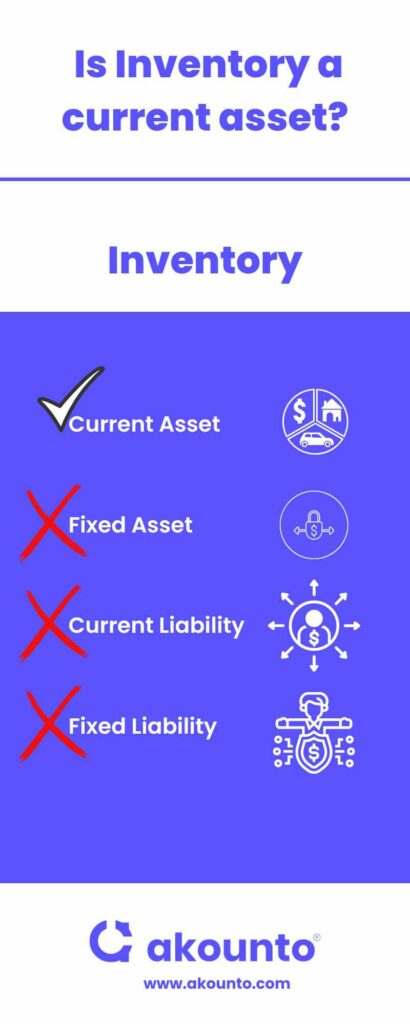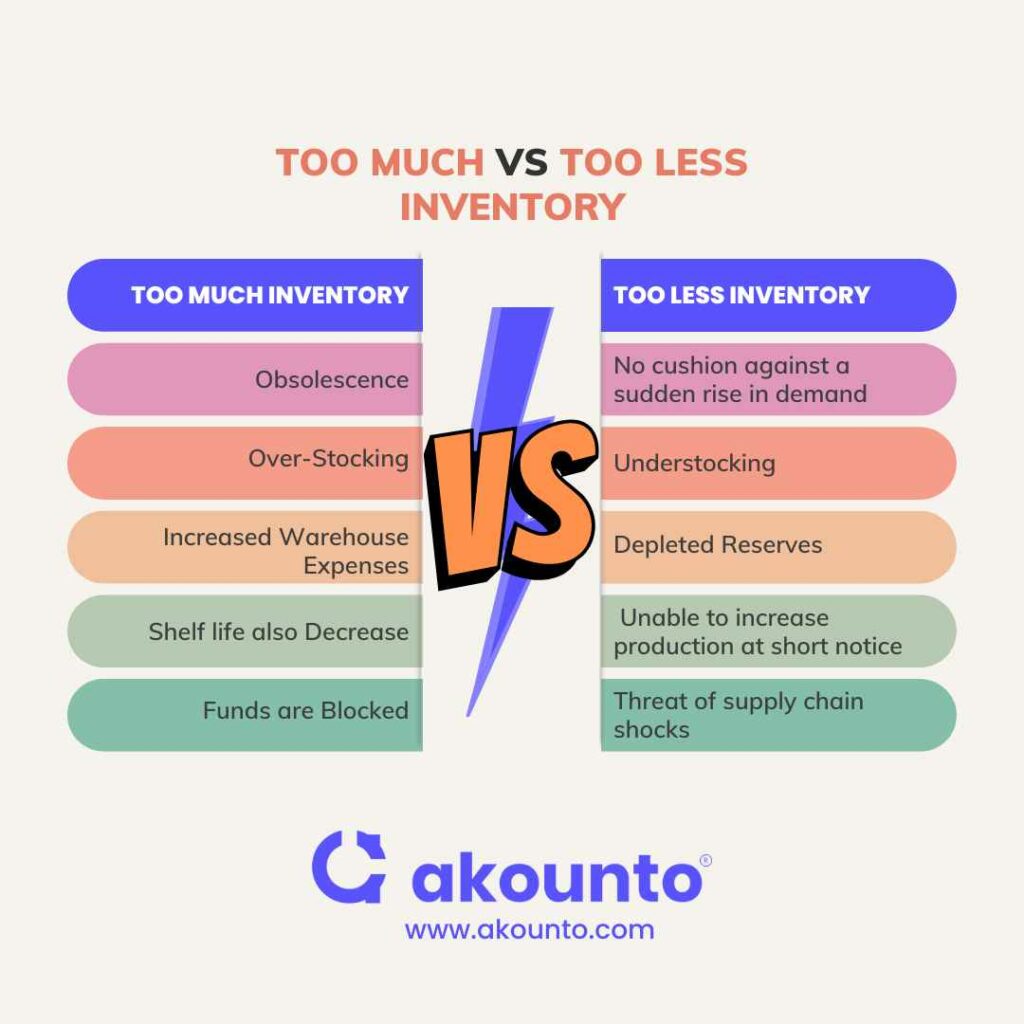Inventory is a current asset that includes raw materials, work-in-progress, finished products, merchandise purchased, and carried forward inventory from the previous accounting period.
Current assets are easily convertible to cash or cash equivalents within twelve months.
As a part of regular business operations, inventories are a part of core business operations, and the company generates revenue by selling final goods. Final goods which are ready for sale are called stock.
In common language, though, people interchangeably use inventory with stock. But selling inventory is not the goal of the business; instead, inventory is one of the factors of production that leads to the final goods sold in an economy.
Inventory is a basic input for creating finished goods, which are meant to be sold as stock to generate business revenues. Inventory is procured, passed through various production/processing/manufacturing phases, and converted to final goods.
The sale of final goods generates essential working capital required to run business operations. A large unsold stock on the company’s balance sheet at the end of an accounting period could highlight inefficient sales operations.
When it comes to answering the common question of “is inventory a current asset,” the nature of the item and its treatment in a strict accounting sense should be considered, as the preparation of financial statements should be based on accounting standards.
Let us now understand inventory as a current asset from an accounting point of view.
What is Inventory in Accounting?

Inventory, a current asset, impacts the Statement of Profit and Loss and the Balance sheet of the company’s financial statements. A stock generates cash inflows by cash sales, and by credit sales, it generates another part of liquid assets called accounts receivable. Accounts receivable further materialize into cash inflows upon receiving payments.
Interesting to note that inventory is a current asset, which may create another current asset: accounts receivables.
In accounting, the valuations, measuring, and recording of the inventory are of utmost importance because it directly impacts the company’s gross profit margins and current assets in the balance sheet.
While raw materials, work in progress, and finished goods qualify as inventories, products returned, spares and samples are not classified as a part of the inventory. However, an inventory management system can manage them.
IFRS and US GAAP (Generally accepted accounting principles) have given accounting standards for inventory accounting.
International Accounting Standards Board (IASB) promotes International Financial Reporting Standard (IFRS) and recommends IAS 2 for calculating the net realizable value (NRV) at which the inventory should be recorded in the balance sheet.
Financial Accounting Standard Board (FASB) recognizes ASC 330 (Accounting Standards Codification) given by US GAAP for inventory valuation and costing.
In addition to the purchase cost, the inventory cost includes all those costs incurred to bring the inventory to the processing location and current condition. Generally, the lower cost or the NRV is chosen for inventory valuation.
The inventory management system can be adapted depending on the type of inventory to determine its cost. Small businesses can deploy different cost measurement techniques like standard costing or retail methods. There are various options to manage inventory from last-in-first-out (LIFO), first-in-first-out (FIFO), and weighted average cost method.
The choice of cost formulas and costing techniques depends on the accounting principles applicable to the industry sector. There are certain differences in the approach of US GAAP and IFRS.
Under US GAAP, while using LIFO or retail method, the market value and the cost are compared instead of compared with NRV, in the case of IFRS. While US GAAP allows LIFO, IFRS completely prohibits it.
Inventory on Balance Sheet
The business generates revenues by selling the stocks; therefore, inventory is always classified as a current asset. Irrespective of normal parlance, even the remaining inventory cannot be classified under noncurrent assets account or fixed assets.
The company’s total assets in the balance sheet are classified as fixed and current assets, depending upon their nature. Other classifications also exist that consist of liquid assets, intangible assets, long-term assets, most liquid assets, etc.
Current assets can be converted to cash or cash equivalents within an accounting period of twelve months.
As the business is expected not to carry the inventory into the next accounting period, therefore is grouped with other liquid assets or short term assets.
Current assets are the measure of short term liquidity of the company. Investors and creditors are interested in the current assets to measure the ability of the company to meet its short term obligations.
A balance sheet depicts a business’s financial position at a particular balance sheet date. How much inventory is held up signifies the number of funds blocked for operational expenses.
Inventory management is quintessential for small businesses as inventory is one of the primary sources of business but also consumes a major part of the company’s working capital. A short working capital cycle with quick payment recoveries hints towards tighter financial management and save money from being held in accounts receivables.

Managing inventory via accounting software is helpful. Having too much stock harms the business as there are downsides of obsolescence, over-stocking, and increased warehouse expenses; in the case of perishable items, the shelf life also decreases, and funds are blocked.
Having too little inventory is also damaging as there is no cushion against a sudden rise in demand, understocking, depleted reserves, unable to increase production at short notice, the threat of supply chain shocks, etc.
Examples of Other Current Assets
When it comes to answering the question, is inventory a current asset? We have conclusively resolved that inventory is a current asset. The unsold or remaining inventory carries forward for the next accounting year, and the damaged goods are debited against the Cost of Goods Sold.
Under no circumstances can inventory be classified as a liability of any sort. It is a current asset.
Current assets checklist
- Cash in hand
- Bank balance
- Inventory
- Marketable securities
- Deposits
- Accounts receivable
- Short term investments
- Prepaid expenses
- Other pre paid liabilities
Emerging businesses need answers to many questions like whether is inventory a current asset, which inventory management techniques are suited for wholesale businesses and how to interpret the current ratio to measure liquidity etc.
Get all the accounting information at Akounto’s Blog and explore the possibilities of deploying accounting software to unlock your business potential.




